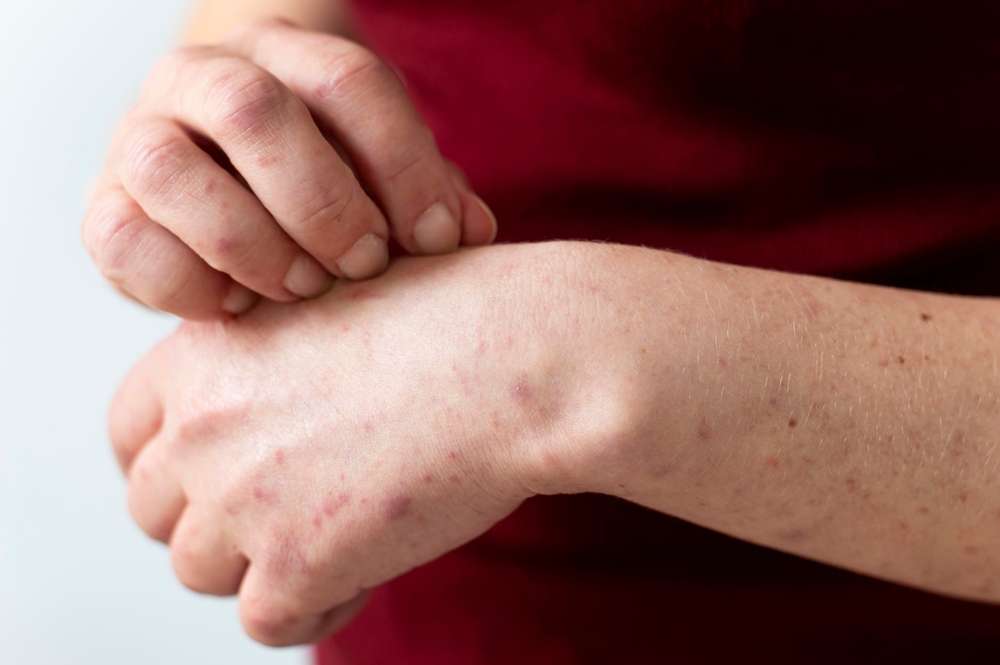Managing Atopic Dermatitis: Causes, Symptoms & Treatments
Atopic dermatitis (eczema) causes dry, itchy, and inflamed patches of skin that can disrupt daily life. This guide explains likely triggers, hallmark symptoms, how clinicians diagnose the condition, and the full range of treatments from moisturizers and topical agents to phototherapy and systemic therapies. Learn practical at-home strategies and when to seek medical care to better control flare-ups and protect skin health.

Managing Atopic Dermatitis: Causes, Symptoms & Treatments
Atopic dermatitis, commonly called eczema, is a long-term inflammatory skin disorder characterized by intense itching and periodic flare-ups. It affects people of all ages but frequently begins in childhood. While symptoms and severity vary, managing the condition relies on understanding triggers, recognizing signs early, and combining medical therapy with home care to protect the skin barrier and reduce inflammation.
What is atopic dermatitis and what causes it?
Atopic dermatitis arises from a mix of genetic, environmental, and immune factors. Many people with the condition have a family history of eczema, asthma, or allergic rhinitis. A defective skin barrier permits moisture loss and makes the skin more vulnerable to irritants, microbes, and allergens. Immune system dysregulation contributes to chronic inflammation, producing the redness, itching, and swelling typical of flare-ups.
Common triggers include dry air, harsh soaps, wool or synthetic fabrics, changes in temperature, stress, pet dander, pollen, and certain foods in some individuals. Identifying and avoiding personal triggers helps reduce the frequency and intensity of flare-ups.
Recognizing the symptoms
The most prominent symptom is severe itching, which often leads to scratching and can worsen skin damage. Other frequent signs are:
-
Dry, rough, or scaly patches
-
Redness and swelling, sometimes with visible raised bumps
-
Small blisters that may ooze when scratched
-
Thickened, cracked, or raw-looking skin after repeated rubbing
-
Changes in skin color or texture, particularly noticeable on darker skin tones
The location of the rash often depends on age: infants commonly have cheek and scalp involvement, while older children and adults tend to develop symptoms on the hands, neck, and the inner surfaces of elbows and knees.
How clinicians make a diagnosis
There is no single laboratory test for atopic dermatitis. Diagnosis typically rests on a clinical evaluation by a dermatologist or primary care provider. The clinician will inspect the rash, ask about symptom patterns, medical and family history of allergic conditions, and review possible triggers. In some situations, patch testing or allergy testing may be used to identify contact allergens or other contributing factors and to rule out other skin disorders.
Treatment approaches
The goals of treatment are to ease itching, reduce inflammation, prevent infections, and maintain a healthy skin barrier. Treatment plans are individualized and may include:
-
Moisturizers: Frequent application of emollients helps restore hydration and improve barrier function. Thick creams or ointments are often more effective than lotions, and should be applied immediately after bathing.
-
Topical corticosteroids: These anti-inflammatory creams or ointments are commonly prescribed for flare control. Potency and duration depend on age, body site, and severity.
-
Topical calcineurin inhibitors: Nonsteroidal anti-inflammatory ointments that can be useful for sensitive areas or as steroid-sparing options.
-
Antihistamines: Oral antihistamines may reduce itching and improve sleep, especially when itching is severe at night.
-
Phototherapy: Controlled ultraviolet light therapy under medical supervision can reduce inflammation for some patients who do not respond adequately to topical measures.
-
Systemic treatments: For moderate-to-severe disease, oral or injectable medications that modulate the immune system, including newer biologic agents, may be recommended.
Treatment intensity escalates with severity; many people achieve control by combining regular moisturization with intermittent topical therapies during flares.
When to see a healthcare professional
Seek medical attention if symptoms are persistent, worsen despite over-the-counter care, or meaningfully affect sleep, work, or daily activities. Also consult a clinician if there are signs of skin infection—such as increased warmth, spreading redness, swelling, or drainage of pus—or if you experience frequent, severe flare-ups. A dermatologist can tailor a treatment plan, suggest prescription options, and advise on infection control and long-term management.
Practical home strategies for everyday management
Daily habits can make a significant difference in controlling atopic dermatitis:
-
Apply moisturizers liberally and often, especially after bathing.
-
Choose mild, fragrance-free cleansers and laundry detergents.
-
Avoid known irritants and tight or scratchy clothing; opt for breathable fabrics like cotton.
-
Keep fingernails short and consider cotton gloves at night to limit scratching.
-
Use a humidifier in dry environments to maintain skin moisture.
-
Practice stress-reduction techniques, because stress can trigger or worsen flares.
Combining these measures with medical therapies improves outcomes and reduces flare frequency.
| Treatment | Typical cost range (approx) |
|---|---|
| Over-the-counter moisturizers | $5–$30 |
| Prescription topical steroids | $20–$150 |
| Phototherapy sessions | $100–$300 per session |
| Systemic biologic therapies | $3,000–$50,000 per year |
Cost estimates are approximate and can vary greatly depending on location, insurance coverage, and individual treatment plans.
Final notes
Long-term control of atopic dermatitis usually involves a partnership between the patient and their healthcare team. Early recognition of symptoms, consistent skin care, trigger management, and timely use of medical treatments usually lead to better symptom control and improved quality of life.
This article is for informational purposes only and should not be considered medical advice. Please consult a qualified healthcare professional for personalized guidance and treatment.





